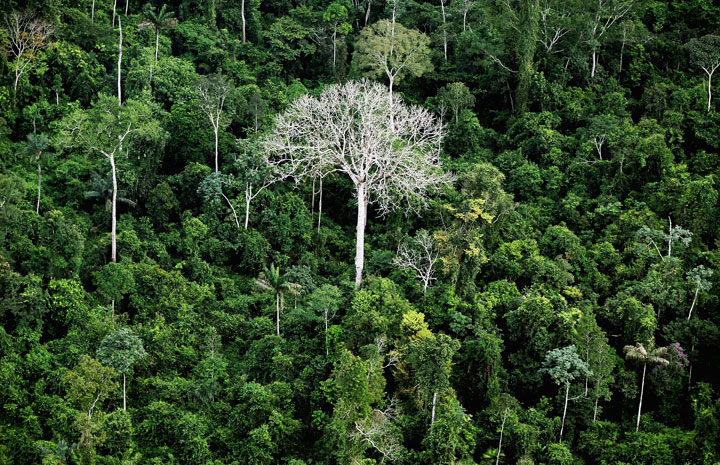TORONTO – While Brazil is taking the heat for blunders leading up to its hosting of upcoming World Cup, the country can proudly boast one thing: It is the world leader in heading off increases in carbon emissions.

A study in the June 6 edition of journal Science, found that, since 2004, farmers and ranchers in Brazil have saved more than 86,000 square kilometres of rainforests from clear-cutting – the equivalent to 14.3 million soccer fields.
That amounted to a 70 per cent reduction in deforestation and 3.2 billion tons of CO2 kept out of the atmosphere.
“Brazil is known as a leading favorite to win the World Cup, but they also lead the world in mitigating climate change,” says the study’s lead author, Daniel Nepstad, who heads the Earth Innovation Institute.
READ MORE: Environmentalists, forestry companies reach deal to protect B.C.’s Great Bear Rainforest
Trees produce carbon dioxide, but they remove more of it. They also are vital to climate regulation.
The study also found that there is no one factor behind the reduction.
Instead, it said bold government policies, market rejection of deforesting farmers and an increase of protected areas all contributed to the change. At the same time, the country’s soy and beef production grew.
“The main message we want to come out of this – I mean, there are several – but it shows just how important the actions in different sectors are in this study,” the study’s co-author Toby McGrath told Global News. “You have government action, you have market restrictions, you have market changes, market commissions and you have better governance, better local control.”

One of the economic factors in the reduction of deforestation was the fact that profitability of soy plummeted. This opened the door for new governmental policies. There was also pressure from Greenpeace for buyers to refrain from buying from businesses associated with deforestation. Public pressure mounted and it soon became too risky for businesses to be associated with deforestation.
But with markets once again picking up steam, the challenge will be for Brazil continue its practices.
McGrath believes the way to build on Brazil’s success around the world lies in understanding that both economic forces and environmental ones that need to play a part.
“The great global challenge is to grow more food, for more people, on smaller areas of land, while we end and reverse the loss of tropical forests,” Nepstad said.
“Brazil has shown the world that it can be done.”
READ MORE: NY judge rejects Chevron’s effort to impede collection of $18B Ecuadorean rainforest judgment
Instead, McGrath believes the better solution is net-zero deforestation, meaning you’d have to consistently maintain the same level of forest.
“It gives farmers flexibility,” he said. This way, it also allows farmers to adapt to changing economic situations.
“We think that large buyers of soy and beef, local farmers, conservation groups and political leaders can come together to design a coordinated approach that works for the long haul,” said McGrath. “The long-term survival of the Amazon forests depends on it.”




Comments